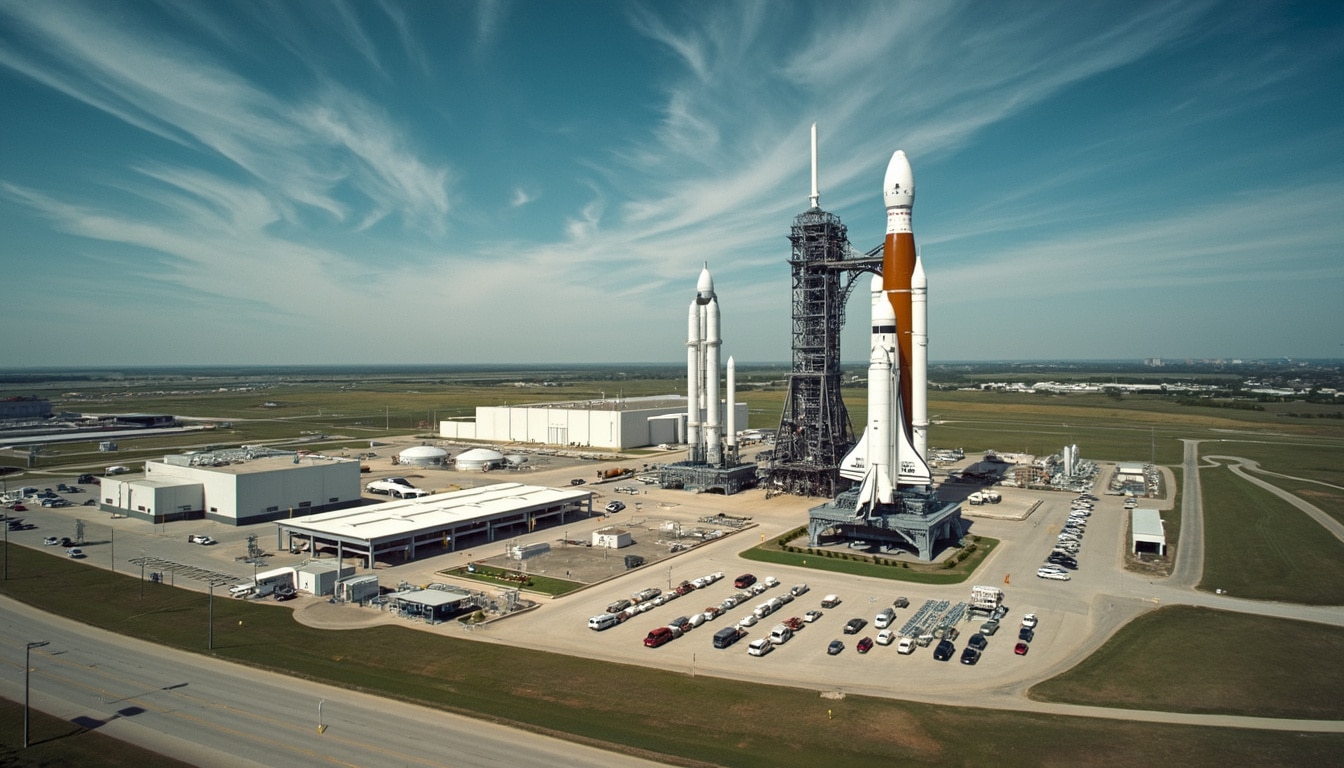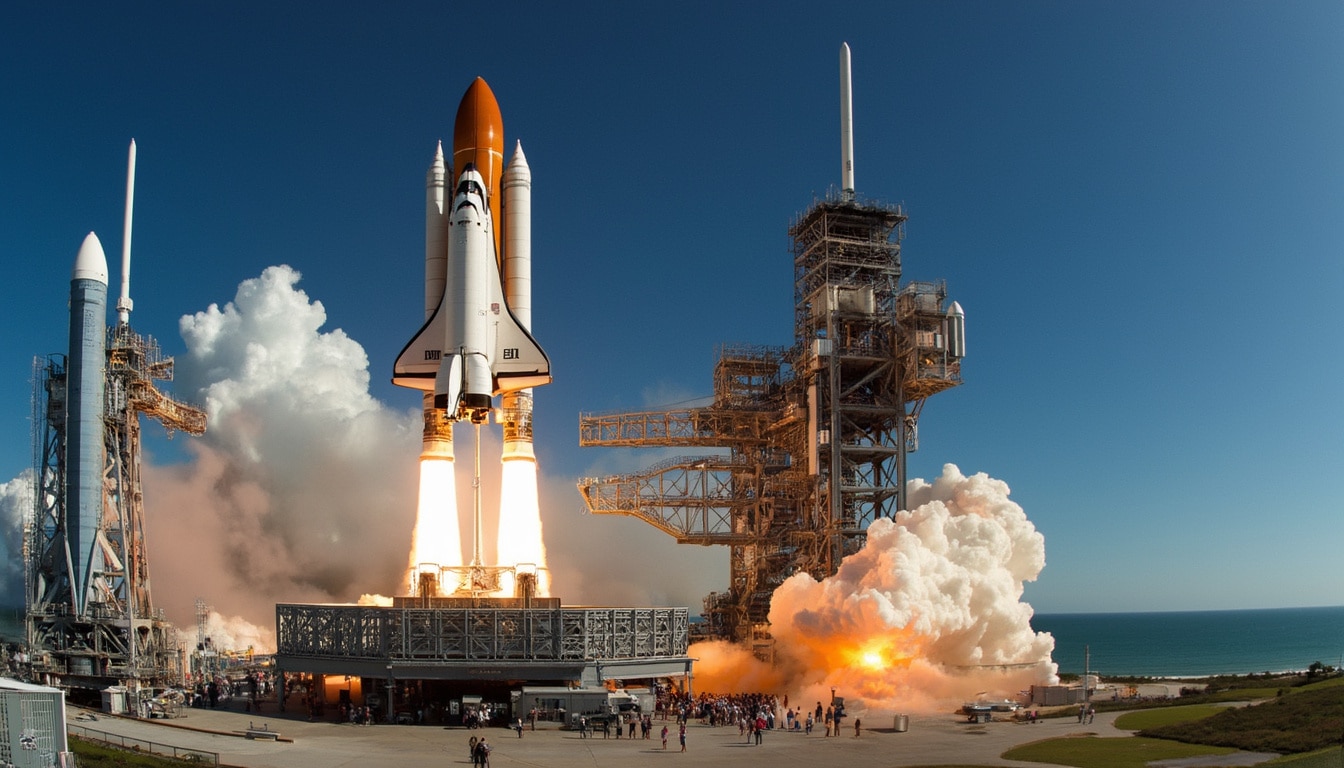The debate surrounding the potential relocation of NASA’s headquarters has intensified as various states vie to become its new home. With the expiration of the current lease in Washington, D.C., set for 2028, states such as Texas and Florida are making robust proposals to accommodate NASA’s future needs. Lawmakers in these regions see this as an opportunity to enhance their local economies and strengthen the nation’s space exploration capabilities. Amid this competitive landscape, the implications of this move for the aerospace industry, including companies like SpaceX, Boeing, Lockheed Martin, Blue Origin, Northrop Grumman, and others, cannot be underestimated.
The discussions around the relocation are not merely about geography; they encompass strategic vision, economic factors, and the potential impact on NASA’s mission. As the agency evaluates its options, its leadership must weigh the benefits of proximity to critical launch sites against the established infrastructure and political ties in the capital. This context sets the stage for an in-depth exploration of the motivations behind this movement, the states in contention, and the broader implications for the future of space exploration.
The States in Contention
Texas and Florida stand at the forefront of the competition for NASA’s headquarters. Their arguments highlight not just geographical advantages, but historical significance and economic incentives. Texas, with its robust aerospace industry and established presence through the Johnson Space Center, argues that relocating the headquarters to Houston would enhance operational efficiency and foster innovation. They emphasize the importance of being at the heart of NASA’s most vital missions, citing the integration of transformational leadership and direct access to critical partners.

Texas: A Legacy of Space Exploration
Historically, Texas has played a pivotal role in U.S. space endeavors. The Johnson Space Center has been a hub for human spaceflight and astronaut training for decades. Recent proposals from Texas lawmakers, including a detailed request to President Trump to consider this move, emphasize that Houston could serve as a rejuvenated epicenter for NASA’s aspirations. As indicated in a letter signed by 27 members of the Texas congressional delegation, the focus is on rejuvenating NASA’s core mission of exploration and development.
This push is not limited to the political sphere; industries such as Raytheon and Sierra Nevada Corporation have expressed support, emphasizing that a Texas headquarters aligns with existing operations and the future vision for aerospace innovation. Similarly, Texas’s proactive approach positions it favorably in an increasingly competitive landscape.
Florida’s Claim: The Space Coast Advantage
Florida is not to be underestimated in this contest for NASA’s headquarters. The Kennedy Space Center, located on the Space Coast, presents itself as an ideal site for NASA’s future operations. Lawmakers have been vocal about their intentions, introducing legislation to expedite the relocation process should they secure the nod from federal authorities. Florida’s argument pivots on the vast infrastructure found at the Kennedy Space Center, which has supported numerous successful missions.

Economic and Strategic Benefits
The economic implications of this potential relocation are substantial. The Space Coast has a burgeoning aerospace economy, with companies like Virgin Galactic and Rocket Lab establishing a presence in the region. The influx of NASA’s headquarters could lead to job creation and sustained growth in related sectors, including technology, research, and tourism. Additionally, being situated in Florida would mean maintaining proximity to the launch pads, thereby streamlining operations and communication.
Furthermore, the political will in Florida is palpable, as local leaders rally for support. The push to relocate the headquarters there could represent a complete reimagining of NASA’s operations, leveraging the advantages of community support, strategic geographical position, and established infrastructure.
Other Contenders and the Broader Implications
While Texas and Florida are the frontrunners, other states like Ohio are also presenting their cases for relocating NASA’s headquarters. Officials from Ohio have lobbied for the Glenn Research Center in Cleveland, citing its history of innovation and contributions to NASA’s missions as a strong foundation to build upon. Sierra Nevada Corporation and other industry players see potential in broadening NASA’s geographic footprint to include regions with historical ties to space technology.
This competition for the headquarters is not just an internal affair for NASA; it reflects a larger trend in U.S. space policy and funding dynamics. As NASA evaluates its organizational needs and potential efficiencies through relocation, the outcome could redefine the landscape of U.S. aerospace industry collaboration. For instance, companies like SpaceX and Lockheed Martin have already made significant investments in their operations in proximity to current NASA facilities. Thus, any major shifts could ripple through supply chains and contractual arrangements.
The Future of NASA and Its Partners
Whichever state emerges as the chosen location for NASA’s headquarters will usher in a new era. Companies like Boeing and Northrop Grumman might find new opportunities or challenges based on the spatial rearrangements of the agency. Collaboration between NASA and private aerospace contractors would likely evolve to meet the demands of this new arrangement. For example, partnerships focusing on lunar exploration or Mars missions could come to fruition based on the central command structure emerging in either Texas or Florida.
In Conclusion: What Lies Ahead for NASA

The ultimate decision regarding NASA’s headquarters relocation will be multifaceted, taking into account operational efficiency, industry collaboration, and potential impacts on space exploration missions. As NASA prepares its future roadmap, the input from the congressional delegation and industry stakeholders will play a decisive role. The upcoming decisions could transform not just where NASA operates, but also how it interacts with private space companies.
In light of these developments, the future landscape of NASA’s operations will rely heavily on collaboration and adaptability. The integration of new technologies by key players in the aerospace industry can influence NASA’s capacity to push boundaries in space exploration. As proponents continue to advocate for their respective states, the implications of this headquarters move will extend beyond mere geography, charting a new course in U.S. space policy.
| State | Key Advantages | Notable Companies |
|---|---|---|
| Texas | Established aerospace industry, Johnson Space Center | Raytheon, Sierra Nevada Corporation |
| Florida | Kennedy Space Center, proximity to launch sites | SpaceX, Rocket Lab |
| Ohio | Rich history of innovation, Glenn Research Center | Northrop Grumman, Boeing |
The race to welcome NASA’s future headquarters is about more than just the physical location of an essential agency. It represents a critical juncture for American innovation and the nation’s standing in the global space race. States are not only competing for jobs and funding, but also for a chance to be at the forefront of the next chapter in space exploration history. The outcomes will influence the dynamics within the aerospace community, urging private enterprises to align their missions with NASA’s evolving objectives.
As the discussions progress and decisions are made, watching how each state strategizes and adapts will reveal much about the future of aeronautics and our approach to space exploration.




Leave a Reply